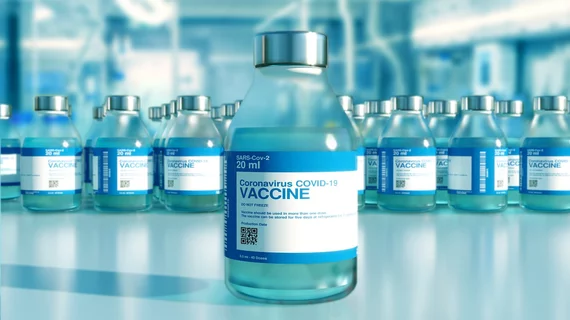Radiologists are reportedly seeing more cases of temporary radiotracer uptake in normal or swollen lymph nodes among patients who have received a COVID-19 vaccination. And providers need to have a plan in place for this “emerging dilemma,” imaging experts urged Tuesday.
The degree of radiotracer uptake during fluorodeoxyglucose PET/CT exams varies depending on where the vaccine was administered. Ranging from intense and temporary to barely observable after weeks, such findings may confuse cancer specialists, according to a clinical perspective shared in AJR.
Most recommendations regarding vaccination-associated lymphadenopathy have focused on breast imaging exams, but this March 2 guidance specifically addresses molecular imaging. All experts seem to be in agreement, however, that preparation is key.
“Radiologists’ awareness of this phenomenon and dissemination of practical recommendations are important to prevent FDG-PET/CT misinterpretation,” Lacey J. McIntosh, DO, MPH, with the University of Massachusetts Medical School/Memorial Health Care’s oncology imaging division, and colleagues explained.
Based on their limited experience, the team suggests performing PET/CT at least two weeks after COVID-19 vaccination in patients with a cancer that may be challenging to interpret, i.e., those involving lymph nodes such as breast cancer, lymphoma and others.
Ideally, however, the group said nonurgent exams should be scheduled 4-6 weeks post-vaccination in order to best avoid false-positives.
This won’t be practical in every situation, the group acknowledged, and postponing care shouldn’t delay vaccinations or needed oncology imaging. And as with other recommendations, approaches should avoid added patient anxiety and unnecessary follow-up imaging and biopsies.
Clinicians should also consider administering vaccines in the arm opposite of unilateral cancer to avoid adding confusion to radiologists’ uptake observations.
“More experience and research are needed to establish a concrete timeline, and the timeline will need to be revisited as additional COVID-19 vaccines that use other biotechnologies are distributed,” the authors concluded.
Read the entire study shared in the American Journal of Roentgenology here.

